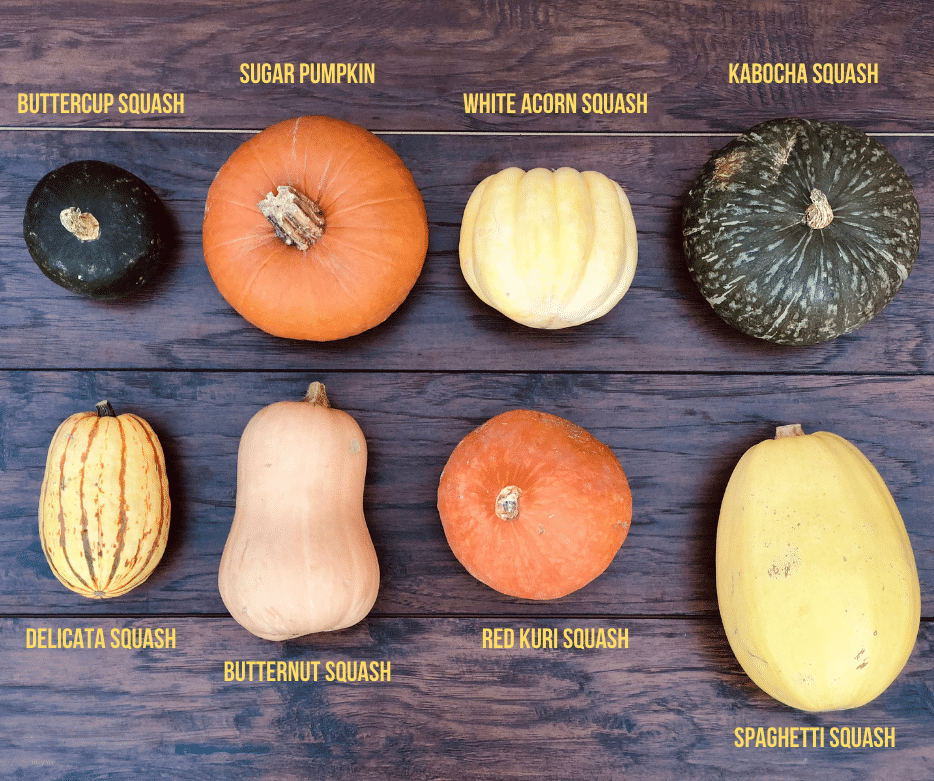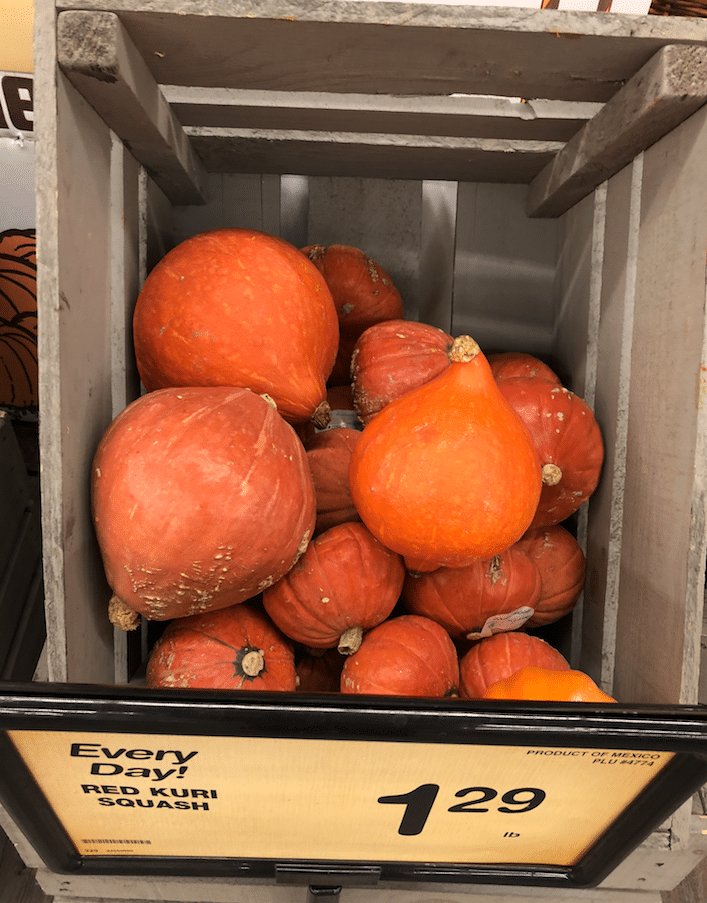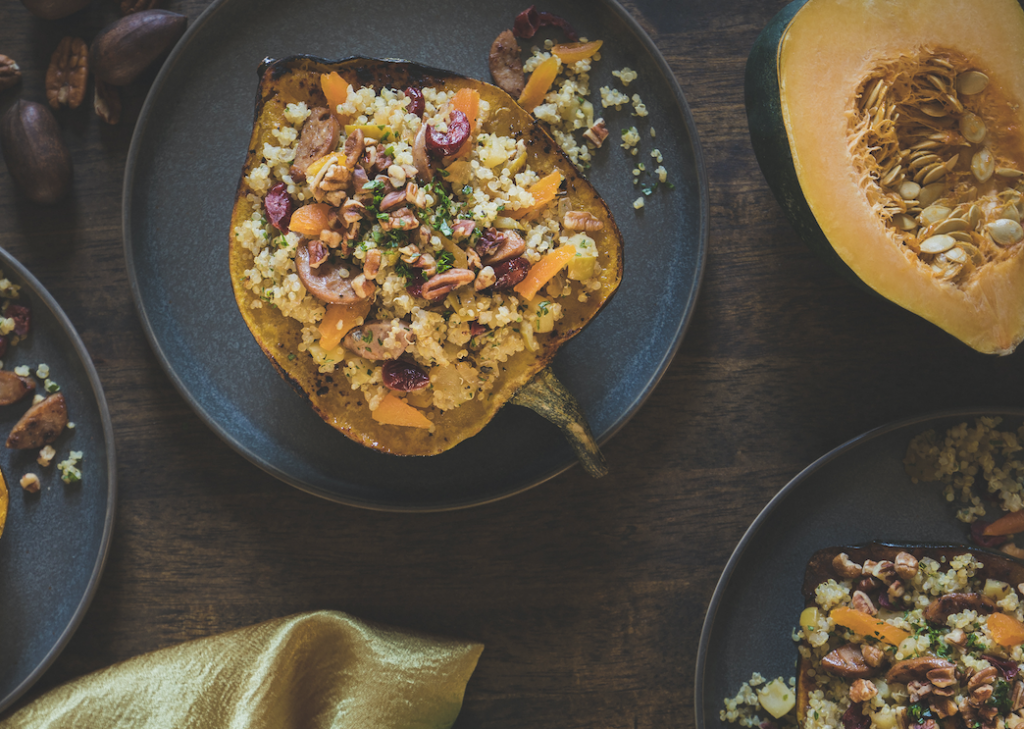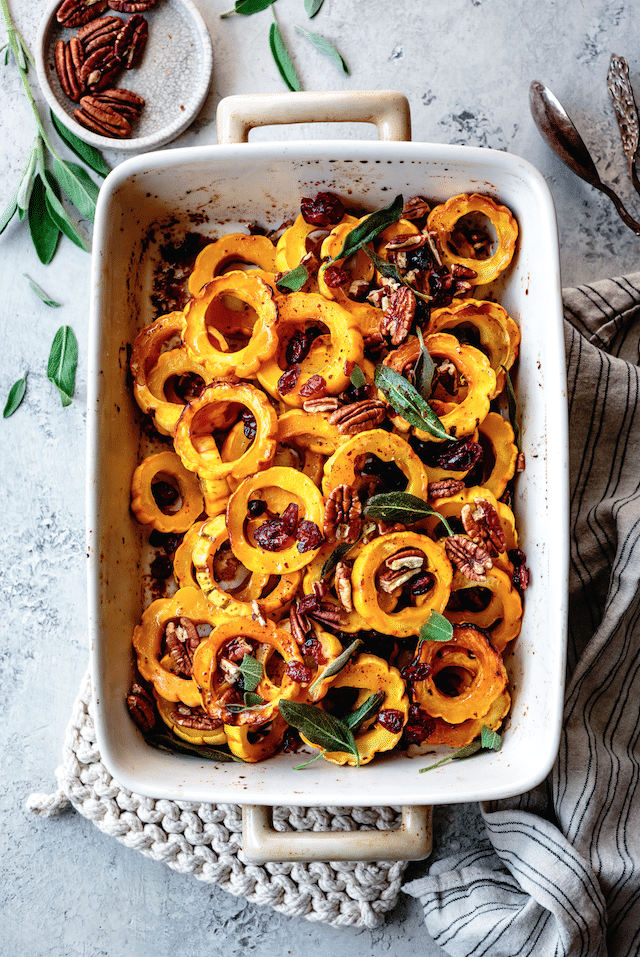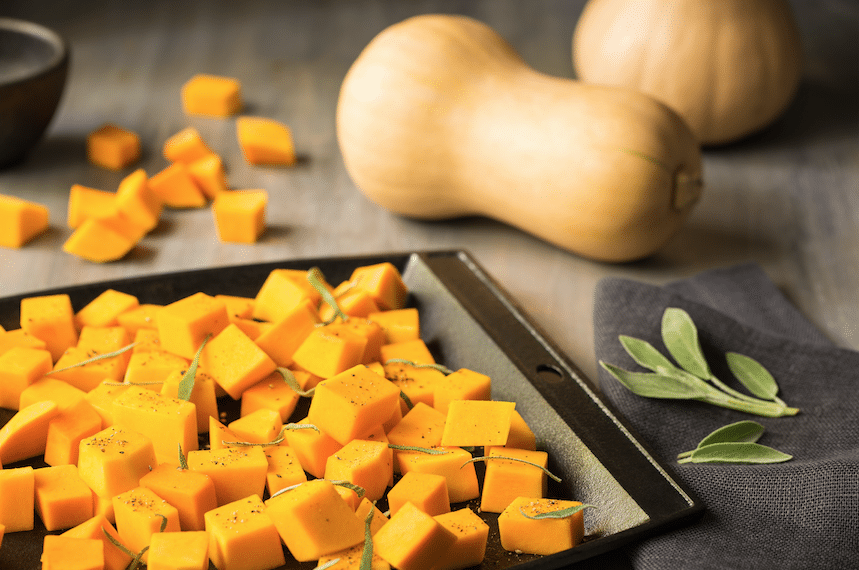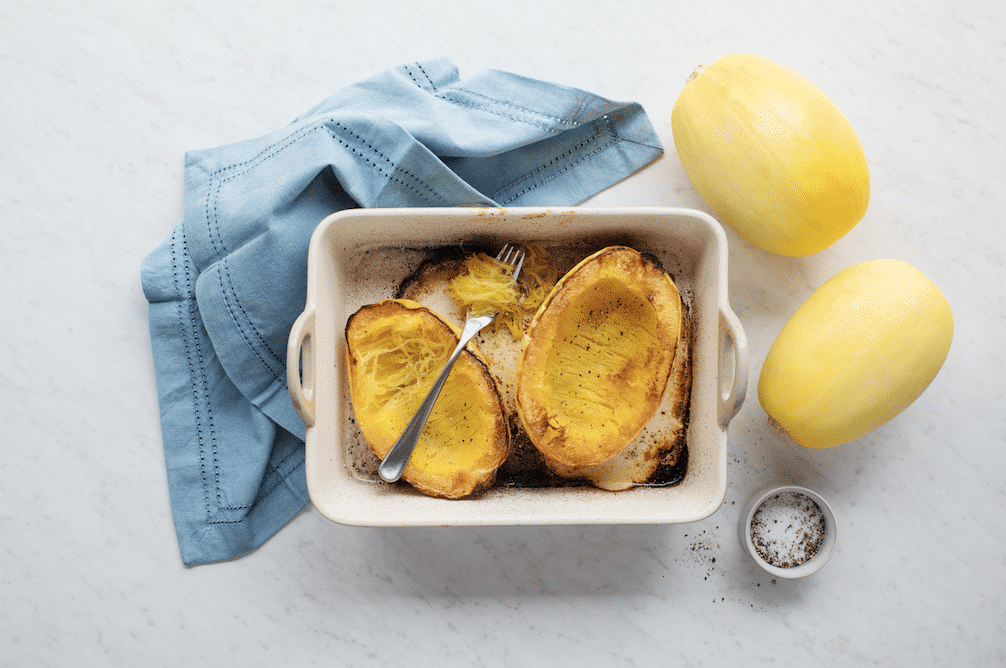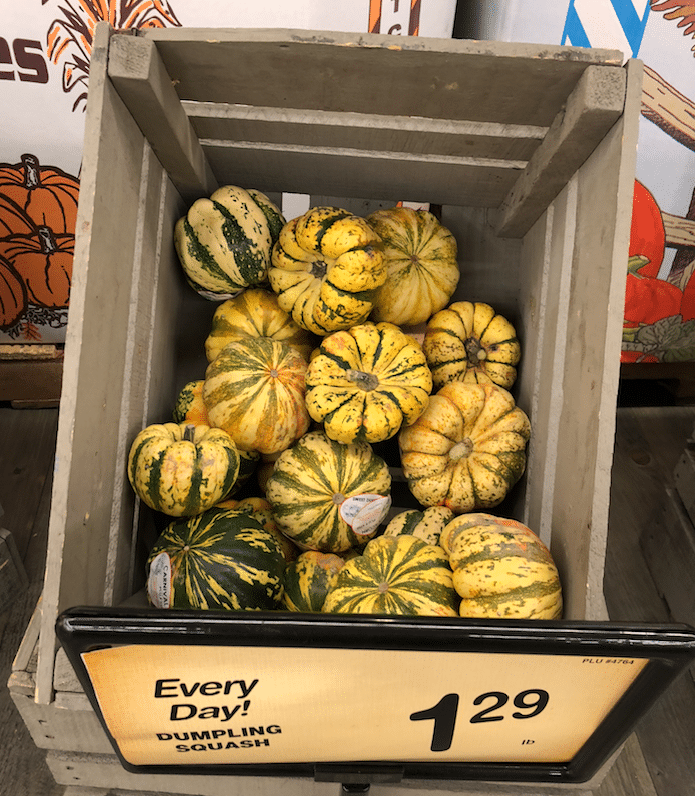Winter Squash Varieties
It’s squash season! How well do you know the winter squash varieties that you see in the large bins at your local Safeway? While some squash is available year-round, like acorn squash, butternut, and spaghetti squash, some of the more obscure squash is only available in the fall, despite their name, winter squash.
Winter squash is so named because it reflects the hard outer shell of the squash as compared to summer squash, which includes zucchini and yellow squash.
Squash can be used interchangeably for recipes. Some squash is sweeter than others, so the sweetness of the dish may inspire your choice of squash. Squash makes an excellent base for fall soups because it’s creamy without adding heavy cream, once roasted and pureed.
Red Kuri Squash – Winter Squash
Red Kuri squash is a teardrop-shaped winter squash with a distinctive bright orange skin. Its shape is similar to a hubbard squash, but it’s much smaller. Its skin is hard but thin and is edible once cooked. Red Kuri has creamy yellow-orange flesh, with a smooth texture and taste similar to cooked chestnuts.
In fact, the word “kuri” is Japanese for chestnut. Like many other winter squash, Red Kuri is a great source of vitamins A and C, potassium, calcium, and iron.
The smooth and sweet Red Kuri squash pairs well with creamy ingredients like dairy and coconut milk. These squash also go well with herbs, beans, curry, and spices. Try it in casseroles, soups, curries, or bake it into pies and muffins. Red Kuri squash is a great substitute for acorn squash and other squash varieties that don’t need to be peeled before cooking.
Recipes where you can swap Kuri Squash:
Stuffed Acorn Squash Recipe With Apples, Sausage and Cranberries
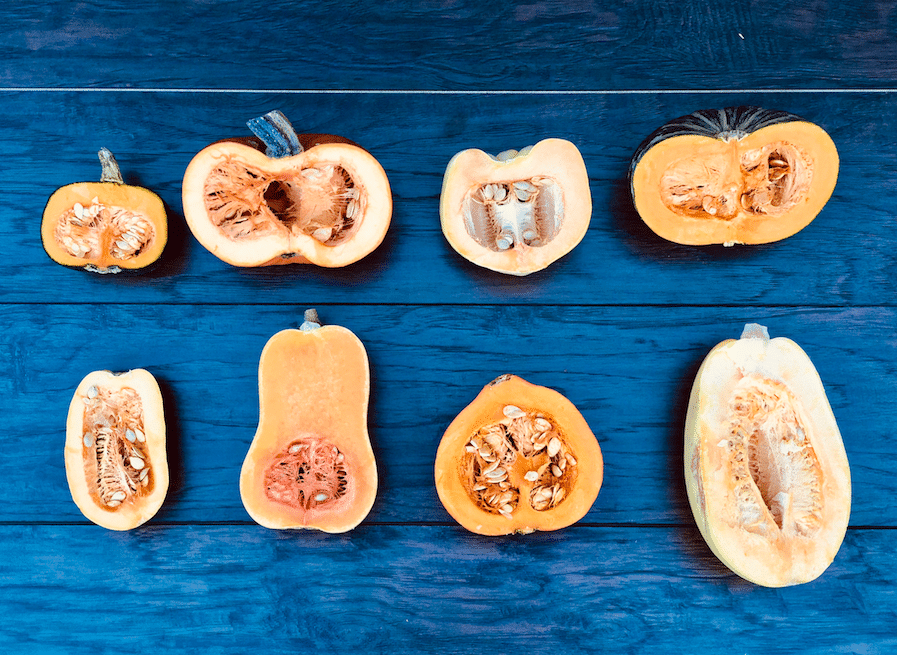
Sugar Pumpkin Winter Squash
Alongside the big, decorative pumpkins typically used for making jack-o-lanterns around Halloween, you’ll also see smaller pumpkins with names like “sugar pumpkins” or “pie pumpkins.”
The large pumpkins tend to have watery and stringy flesh, so they’re not a great choice for cooking or baking. Sugar pumpkins, on the other hand, are an excellent choice for cooking and baking because these smaller pumpkins have a firm, sweet flesh that is much softer than that of larger pumpkins.
They’re great for roasting, making soups, and making homemade pumpkin puree for pies, not just because they have a good pumpkin flavor, but also because they are firmer and less stringy flesh roasts to a much more pleasant consistency than that of a much larger pumpkin.
Recipes Using Pumpkin Puree:
Healthy Pumpkin Chocolate Chip Muffin Tops
Savory Pumpkin Chili with Ground Turkey
Pumpkin Pecan Pie Recipe 2 Classic Pies in 1 Epic Fusion Pie
Kabocha Squash
Also known as Japanese pumpkin, Kabocha is in the same family as Hubbard squash, turban squash, and buttercup squash.
Kabocha is a hard squash, like most winter squash varieties are, and it has green, slightly bumpy skin, often with light green or white stripes and dark yellow-orange flesh inside.
You’ll find that it’s a very sweet squash and has a slightly dry texture. It makes a fantastic soup.
Like other squash varieties, Kabocha is a great source of vitamin A, vitamin C, and fiber. It can be used in many of the same ways that you’d use butternut squash.
Kabocha Squash Recipes:
9 Things to Make with Kabocha Squash
Acorn Squash
Acorn squash is a distinctive squash named for its acorn-like shape. It has yellow-orange flesh that can be sweet or savory depending on how it’s prepared. Typically best roasted, it can be stuffed or simply brushed with melted butter and maple syrup for an easy side dish.
You’ll find acorn squash can be green, white, or orange. The exterior color does not impact the squash flavor. Acorn squash is tender and tastes amazing when roasted and caramelized.
Like other winter squash, the whole acorn squash store very well in the cold months, just keep them cool and dry; they’ll last a month or more.
They’re a great source of iron, Vitamin A (from all that beta-carotene-filled orange flesh!), Vitamin C, and riboflavin.
Recipes using acorn squash:
Stuffed Acorn Squash Recipe With Apples, Sausage and Cranberries
Delicata Squash
A favorite squash by many because of its small size, thin edible skin, and sweet flavor, the delicata squash should be on your list to try this fall. Nicknamed, the “sweet potato squash”, it has a sweet, creamy flesh that caramelizes beautifully in the oven.
Delicata is best in early-mid fall and you’ll be lucky to find it in stores after mid-November.
If you want to get your hands on this delightful squash I suggest you do it now before it sells out!
Recipe for delicata squash:
Brown Butter Roasted Delicata Squash
Butternut Squash
Recipes using Butternut Squash
Coconut Curry Butternut Squash Soup Recipe
Butternut Squash Salad With Kale, Apples & Cranberries
Spaghetti Squash
Spaghetti Squash is available year-round and is the mildest tasting of all the squashes. When raw, the flesh is solid and similar to other raw squash. However, when cooked, the tender squash falls away from the flesh in ribbons or strands that look like spaghetti.
A healthier alternative to wheat pasta, spaghetti squash has a delicate sweet flavor that can be topped with savory options like ground beef, ground turkey, or meatballs.
I like to prepare spaghetti squash with garlic, onions, olive oil, white wine, pine nuts, and parmesan cheese. I’ll often add cherry tomatoes or artichoke hearts for extra flavor.
Recipes using Spaghetti Squash
Ginger & Coconut Roasted Spaghetti Squash Soup
Buttercup Squash
A Buttercup squash is similar in size and shape to a small pumpkin but has a green exterior that may remind you of acorn squash.
Sometimes called a turban squash, its peak season starts in early fall and lasts through the winter. It has orange flesh that is typically described as sweet and creamy.
You can easily substitute buttercup for any winter squash, like an acorn or delicata. It’s also a great substitute for sweet potatoes, so if you have a cozy sweet potato recipe you can swap buttercup squash.
Sweet Dumpling Squash
One additional squash that you may find in the big squash bin at the grocery store is the sweet dumpling squash.
Sweet dumpling squash is a winter variety, available throughout the autumn months. Relatively small (think baseball to grapefruit size), they look like little, white or yellow pumpkins with green speckles and stripes between the ribs. Cut one open, and you’ll find bright-orange flesh similar to that of a sweet potato but not as firm or dense.
The sweet dumpling squash’s similarity to both pumpkin and sweet potato is a clue to its use. The flesh of the squash can be scooped out to make a pie or mashed with butter and cinnamon. The difference is found in the sweet dumpling squash’s skin, which is thin, entirely edible, and sometimes even sweeter than what’s inside. Roasting the whole gourd, stuffed with practically anything is a snap. In fact, roasting is one of the most popular ways to prepare this sweet autumn side.
What is your favorite kind of squash and how do you like it prepared? Be sure to let us know in the comments below.
SuperSafeway is a blog devoted to helping you find the best deals at Safeway in the Denver division. Every week we slice and dice the ad and tell you the best deals at Safeway with and without coupons. For more low prices, check out Super Safeway’s weekly ad coupon matchup page. Want to stay updated on the best deals? If so, make sure to like Super Safeway on Facebook, join our Facebook group, follow us on Twitter, Instagram, or Pinterest and subscribe to our newsletter.
* Please note – Savings information is based on Colorado pricing and the Safeway Coupon Policy for the Denver Division which includes Colorado, Nebraska, New Mexico, Wyoming and South Dakota. Your market may vary. Prices may vary per location*

